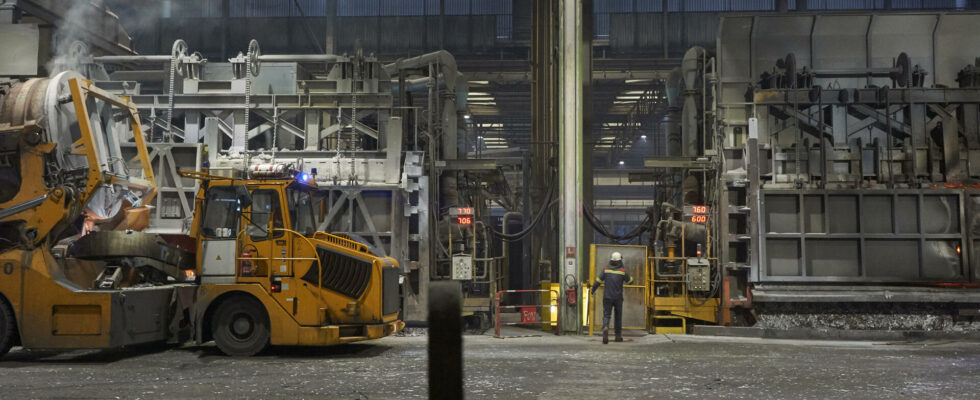The site alone occupies 65 hectares on the large seaport of Dunkirk (North). It would almost seem inconspicuous compared to the 450 hectares of its neighbor, the ArcelorMittal steelworks, located a few hundred meters to its right, along the North Sea coast.
To its left, in the distance, we can see the towers of the Gravelines nuclear power plant. And, on the other side of the departmental road, on the land side, the lost walker can see the first constructions of the future gigafactory (giant factory) of the young French manufacturer of electric batteries Verkor.
Aluminum Dunkerque is located in the heart of Dunkirk, a showcase of French industrial renewal. It was on his site that Emmanuel Macron went in May 2023, with helmet and safety equipment, to detail his national reindustrialization policy. Let’s get rid of the superlatives straight away: the company is the largest primary aluminum foundry in Europe, with some 700 employees and 300,000 tonnes of metal produced each year by its 264 electrolysis tanks and seven melting furnaces.
A strategic material
Located in Loon-Plage, on the outskirts of Dunkirk, the site classified Seveso high threshold is the largest consumer of electricity in the entire country. It alone consumes 4 terawatt hours (TWh) each year, or around 0.9% of electricity consumption in France. Or half a slice of the total production of the Gravelines power plant.
Everything should be smiling at Aluminum Dunkerque. Light, flexible and recyclable, aluminum is considered a strategic material for the environmental transition, contributing in particular to the lightweighting of vehicles in the automobile industry or by being an alternative solution to the elimination of single-use plastics in the packaging sector. Its demand is expected to increase significantly in the coming years. At Aluminum Dunkerque, we plan to double production by 2050, to around 600,000 tonnes of metal sold in the form of ingots or plates.
But aluminum manufacturing is also one of the most energy-intensive and polluting industries, and Aluminum Dunkerque is one of the fifty industrial sites emitting the most greenhouse gases in France, with nearly 520,000 tonnes of carbon equivalent emitted in 2019, according to the Ministry of Industry. The main cause is the electrolysis bath stage, which uses one-ton carbon anodes which produce CO2 by being consumed in the vats. “We emit 1.8 tonnes of CO2 per tonne of aluminum produced, this is already a very good result compared to most of our global competitors”estimates Sylvain Delenclos, operations supervisor at Aluminum Dunkerque.
You have 56.87% of this article left to read. The rest is reserved for subscribers.
